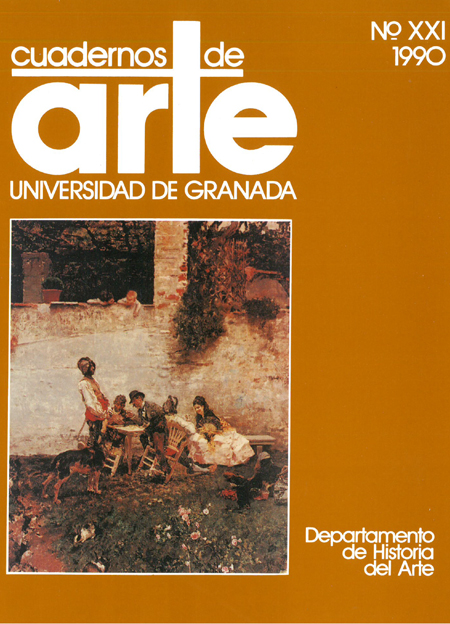Figuras y composición en el Lazo de Ocho hispanomusulman
Abstract
In this paper the author presents a hypothesis concerning the way in which the Moorish interlaced design known as the "lazo de ocho" was made up, within the limitations of our knowledge of the historical context in which it took place.He defines the proportional canon and how it was obtained both geometrically and arithmetically, and offers a detailed description ofthe different figures which constituted the basis ofthe system, of a typology which relied on the presence or absence of "wheels" and the different models of the established proportional canon. He then studies the complex themes which arise from the groupings ofthe figures. The last section ofthe paper is devoted to an analysis of the composition ofthe plinths in the "Salen ofComares" ofthe Alhambra (Granada) as an example ofthe way in which the metodology proposed might be applied.
Downloads
Downloads
Published
1990-11-10
How to Cite
García Granados, J. A. (1990). Figuras y composición en el Lazo de Ocho hispanomusulman. Cuadernos De Arte De La Universidad De Granada, 87–110. Retrieved from https://revistaseug.ugr.es/index.php/caug/article/view/10980
Issue
Section
Estudios
License
Los autores que publican en esta revista están de acuerdo con los siguientes términos:- Los autores conservan los derechos de autor y garantizan a la revista el derecho de ser la primera publicación del trabajo al igual que ser licenciado bajo una licencia Creative Commons que permite a otros compartir el trabajo con un reconocimiento de la autoría del trabajo y la cita de la fuente original, con un uso no comercial y siempre que no se hagan obras derivadas.
- Los autores pueden establecer por separado acuerdos adicionales para la distribución no exclusiva de la versión de la obra publicada en la revista (por ejemplo, situarlo en un repositorio institucional o publicarlo en un libro), con un reconocimiento de su publicación inicial en esta revista.
- Se permite y se anima a los autores a difundir sus trabajos electrónicamente (por ejemplo, en repositorios institucionales o en su propio sitio web) antes y durante el proceso de envío, ya que puede dar lugar a intercambios productivos, así como a una citación más temprana y mayor de los trabajos publicados (Véase The Effect of Open Access) (en inglés).


 ISSN-e: 2445-4567
ISSN-e: 2445-4567








